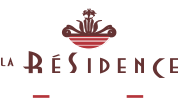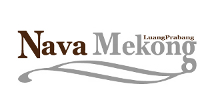Partners

|
|
In 1930, the mansion at 5 Le Loi opened as an addition to the residence of the colonial French Resident Superieure. This period was the hey-dey of the art deco school of design. No corner of the globe was beyond the bounds of this popular movement. While art deco fever was especially fervent in Hanoi and Saigon, Hue Vietnam also tapped the design current of the day for some of its landmark period buildings. In the 1930s, Le Loi Street was known as rue Jules Ferry, thus named for a 19th Century French prime minister and imperialist. During the Nguyen Dynasty, the imperial navy governed the land along the river, from the present-day railway station to the Stone Bridge (Dap Da) 2.5 kilometers downstream. When the French assumed control of Hue in the 1880s, they ceded the northern bank of the Perfume River to the Vietnamese and redeveloped the south bank as their 'New City.' Today, it's known as one of the most beautiful hotels in the world.
|

|
|
In the heart of Asia's "best preserved city," there is Villa Maly. A residence. An oasis. A destination unto itself. Once the home of Lao royalty, today Villa Maly is an exquisite boutique hotel, ensconced by a profusion of tropical flora. Its rooms evoke the subdued elegance and creative flourishes of yesterday's aristocrats. Its wonderful situation, in an enclave of classic old homes, will embed itself in your dreams of Luang Prabang.
|

|
|
Dining on the mighty Mekong is to being in Luang Prabang what walking over the Brooklyn Bridge is to being in New York. Essential. The cruise embarks daily at 5:30 pm and motors downstream to moor near a traditional village where traditional Lao dancers perform age-old sets that include interpretations of the royal ballet, rural life, folk tales and legends. The boat returns at 9 pm. Widened at the beam to accommodate 10 four-top tables, the traditional Lao river boat also embarks every morning at 10:30 am for a four-hour lunch cruise. During this cruise, the Nava stops at the Pak Ou Caves for adventuring among the 4,000 sacred Buddhist statues and images scattered about the two limestone grottoes. For more details, contact smm@appletree-asia.com.
|

|
|
In the heart of the Lao jungle, on the banks of the Mekong, Kamu Lodge strikes a delicate balance between tourism and the maintenance of the region's cultural and ethnic heritage. However swift moving the flow beneath our bluffs, the Lodge is an eddy in the rushing currents of our age. A place to slow down. Disengage. An opportunity to live as deliberately as Thoreau, if only for a day or two, fronting the essential facts of the natural world. Thirty kilometers upstream from Luang Prabang, the Mekong channels between the dramatic flanks of Lao hills, scenery that very well may be unrivalled in the river's 4,350-kilometer journey to the sea. In his book about a landmark journey from the river's source to its delta, modern explorer Edward Gargan describes this stretch of the Mekong this way: "Here, wrapped on both sides by jungle, sometimes dense, sometimes scrubbed by slash-and-burn agriculture, the wagon train of globalization had yet to venture." Unlike the major rivers of China, where civilization crowds the waters, the river running by Kamu Lodge is relatively pristine. Boatmen drink its waters. Villagers wash clothes in its shallows. This is Laos as the Lao have lived it for ages. No wonder the New York Times recently identified Laos as the #1 place in the world to visit. Our full board packages feature a leisurely return cruise from Luang Prabang to Kamu Lodge. |
Share This
| Tweet |
